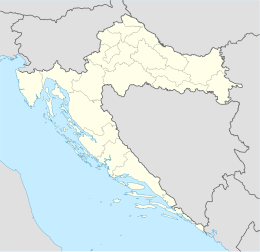Sveti Grgur: Difference between revisions
Appearance
Content deleted Content added
Importing Wikidata short description: "Island of Croatia" |
typo Tags: Mobile edit Mobile web edit |
||
| Line 35: | Line 35: | ||
==Literature== |
==Literature== |
||
*Milutin Popović, ''Sećanja na logor Sveti Grgur''. Symix graphics, Beograd, 1991. |
*Milutin Popović, ''Sećanja na logor Sveti Grgur''. Symix graphics, Beograd, 1991. |
||
*Ženi Lebl, ''LJUBIČICA BELA''-''White |
*Ženi Lebl, ''LJUBIČICA BELA'' - ''White Violet'' with the subtitle "Two and half years in the Yugoslav Gulag for women", Belgrade, 2009 |
||
==References== |
==References== |
||
Revision as of 07:53, 17 May 2024
 Map of Sveti Grgur | |
 | |
| Geography | |
|---|---|
| Location | Adriatic Sea |
| Area | 6.37 km2 (2.46 sq mi) |
| Highest elevation | 226 m (741 ft) |
| Highest point | Štandarac |
| Administration | |
| Demographics | |
| Population | 0 |
Sveti Grgur (Croatian pronunciation: [svȇtī gr̂guːr], Template:Lang-it; lit. Saint Gregory) is an uninhabited island in Croatia, on the Adriatic Sea between Rab and Krk. The island was the site of a women's prison in SFR Yugoslavia, in tandem with nearby Goli Otok which served the same purpose for men, from 1949 to 1980.[1]
See also
Literature
- Milutin Popović, Sećanja na logor Sveti Grgur. Symix graphics, Beograd, 1991.
- Ženi Lebl, LJUBIČICA BELA - White Violet with the subtitle "Two and half years in the Yugoslav Gulag for women", Belgrade, 2009
References
- ^ "GOLI OTOK PRISON CAMP". Balkan History. Retrieved 2023-12-22.
External links
 Media related to Sveti Grgur at Wikimedia Commons
Media related to Sveti Grgur at Wikimedia Commons

